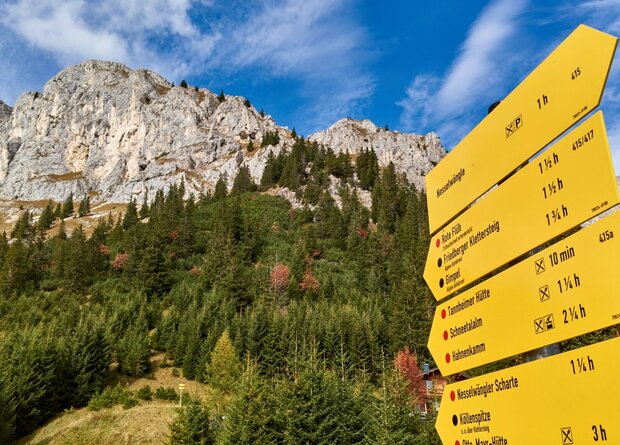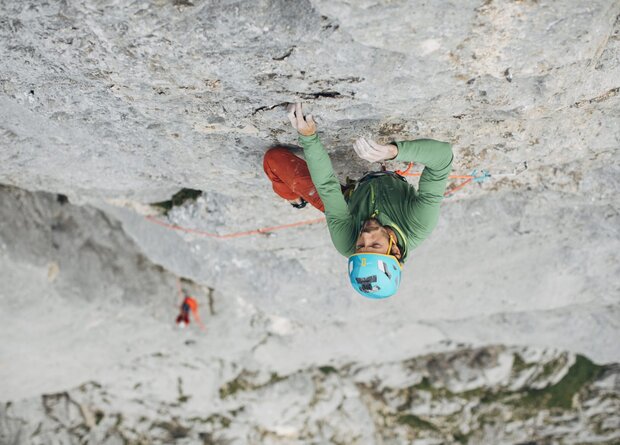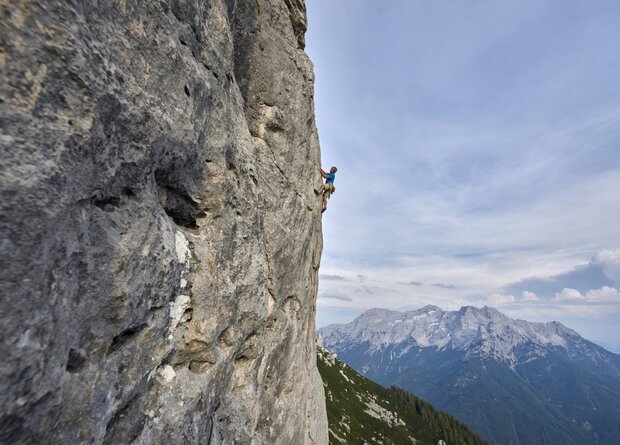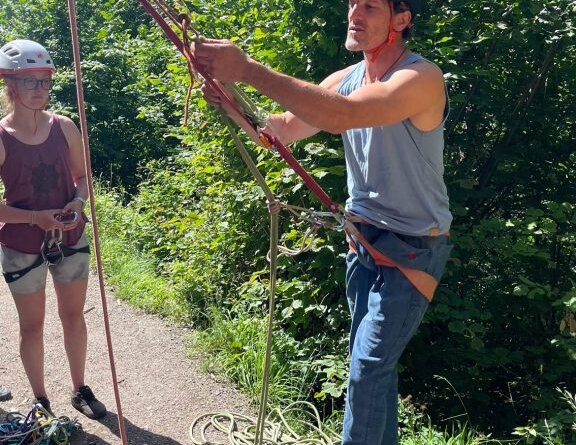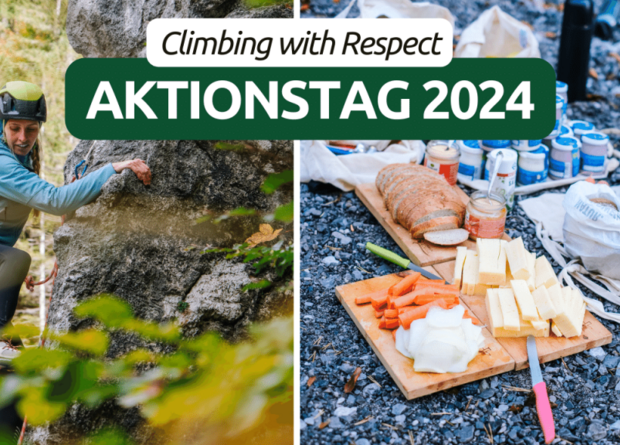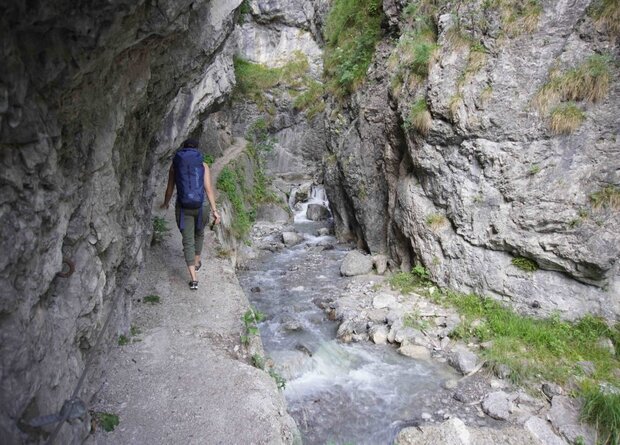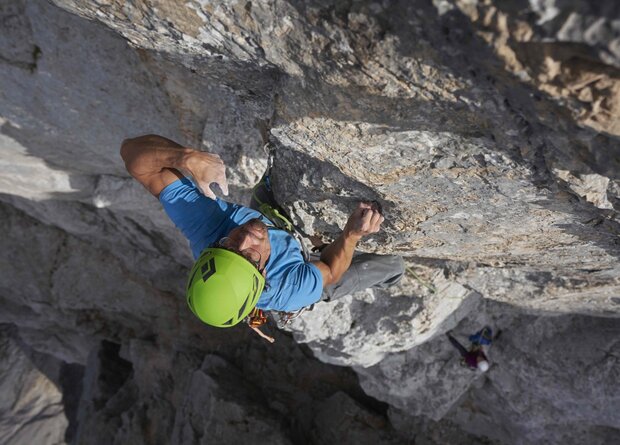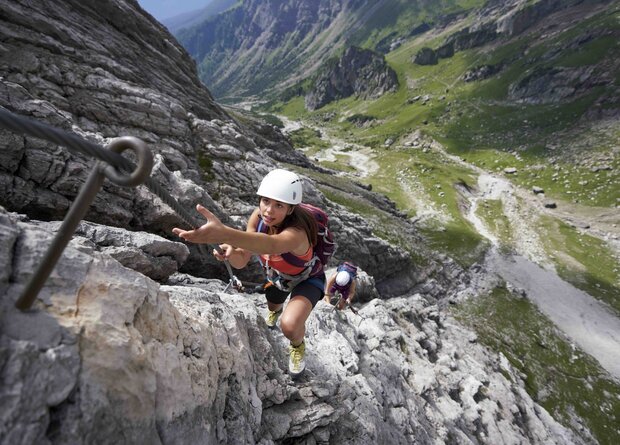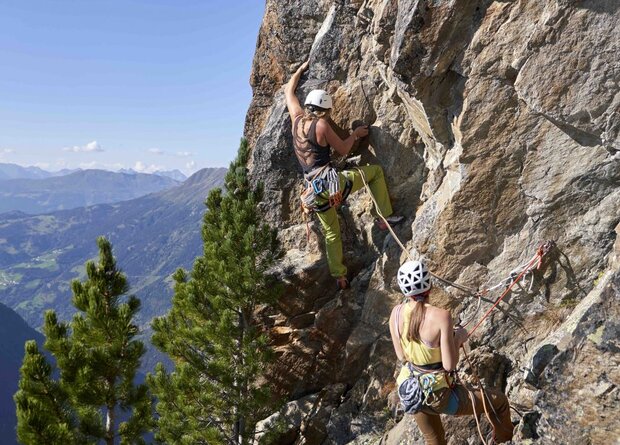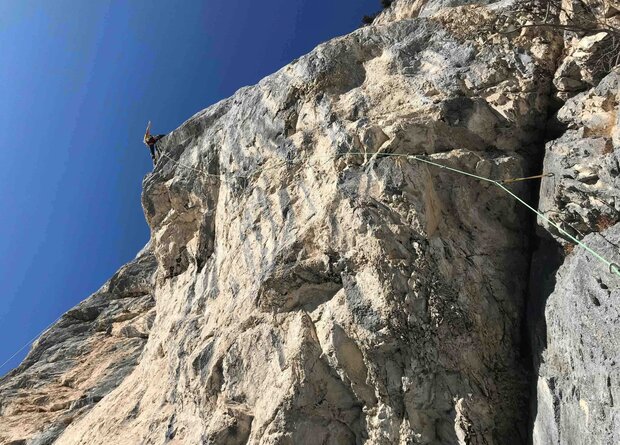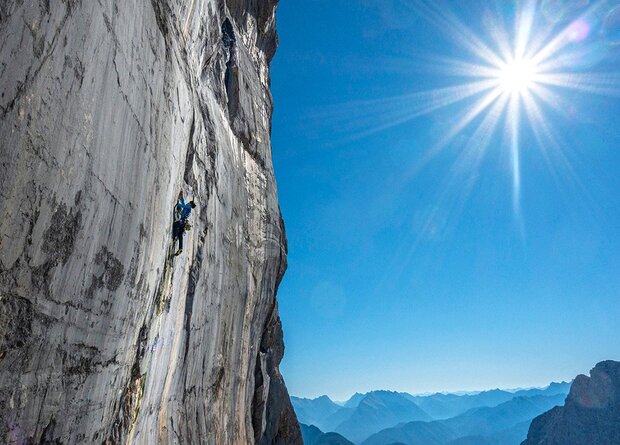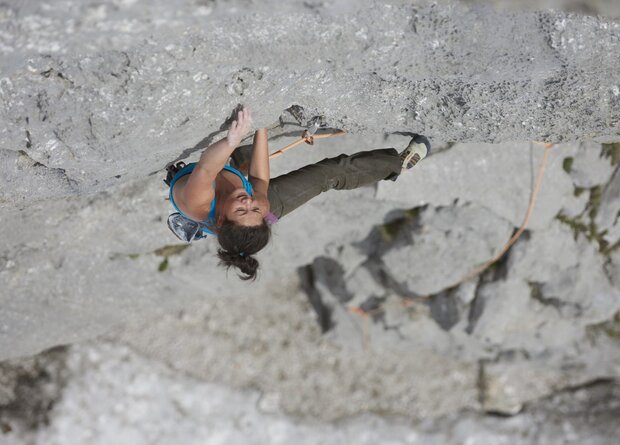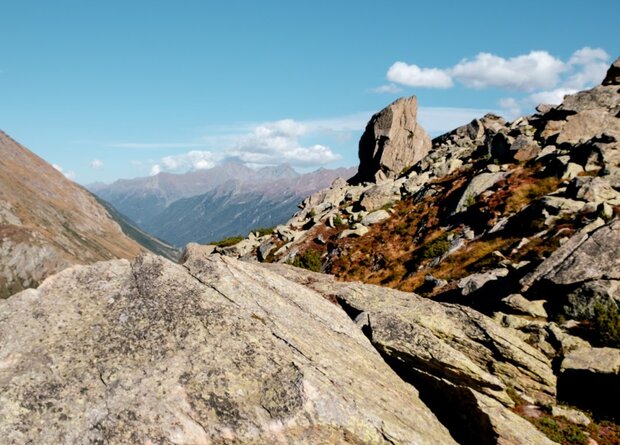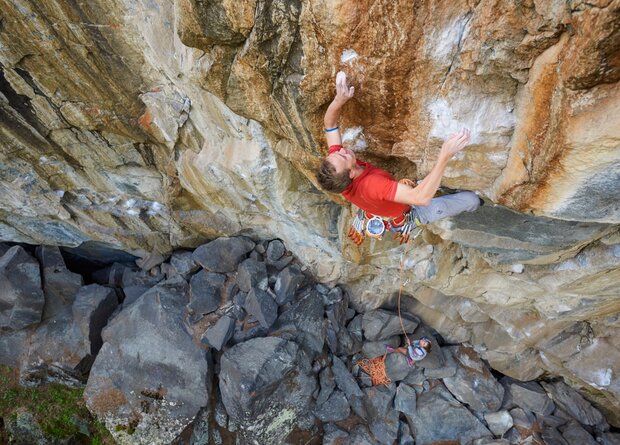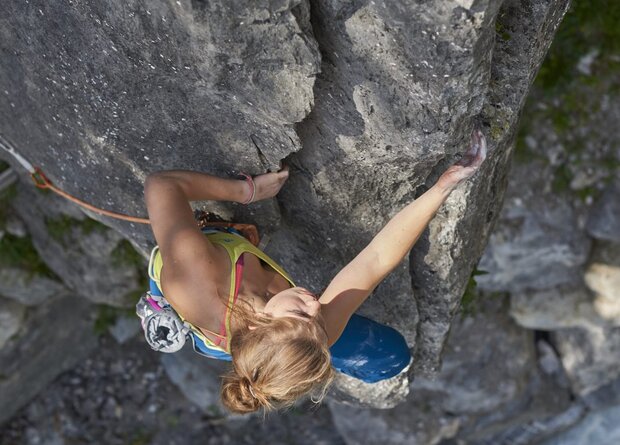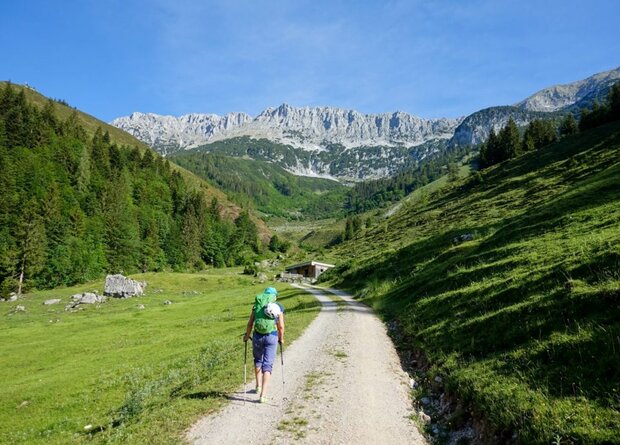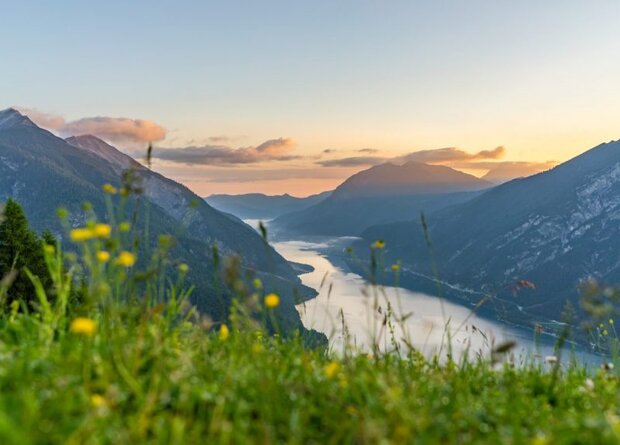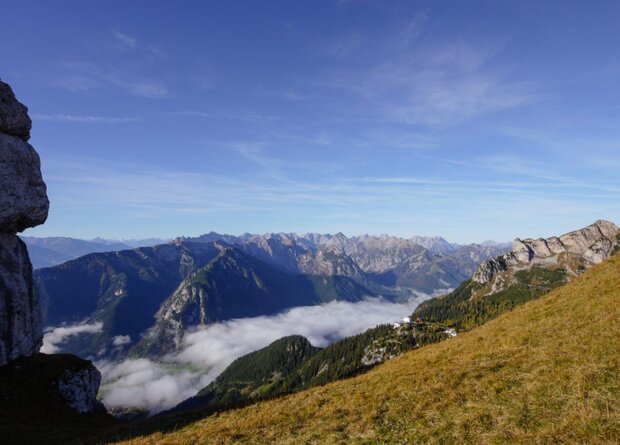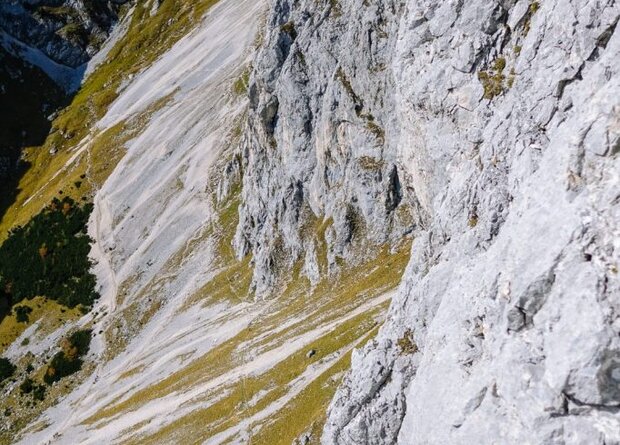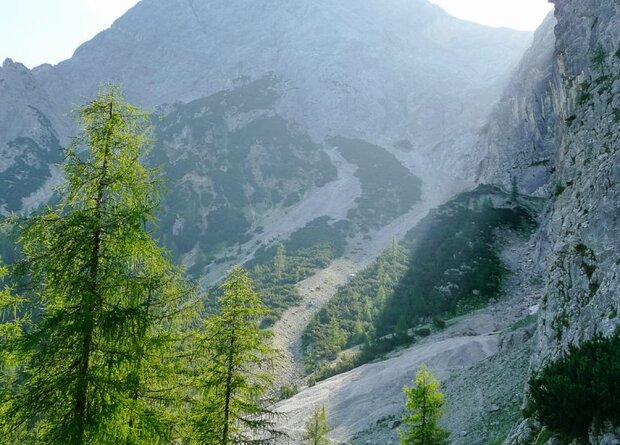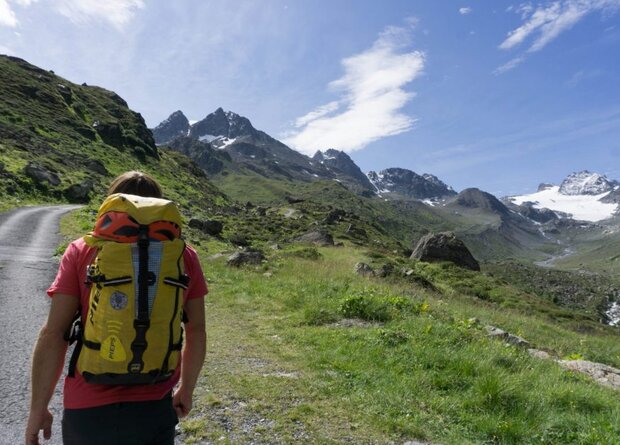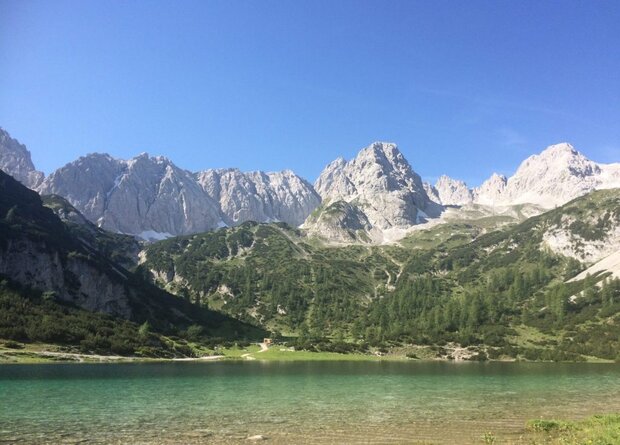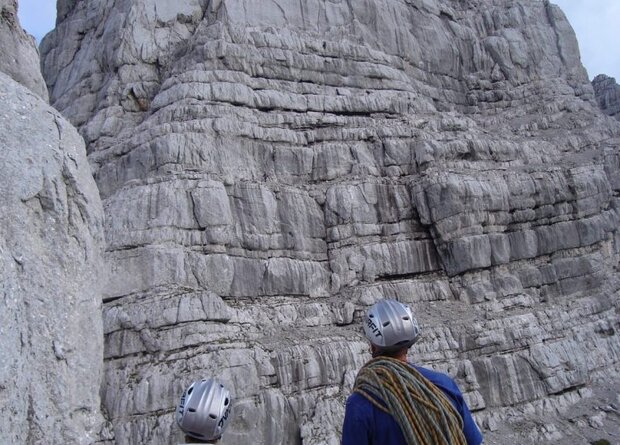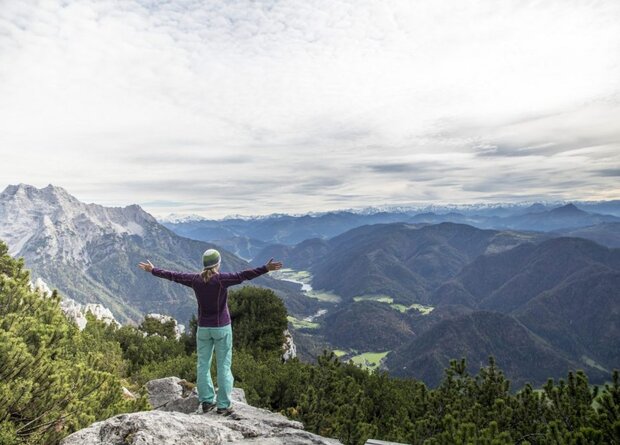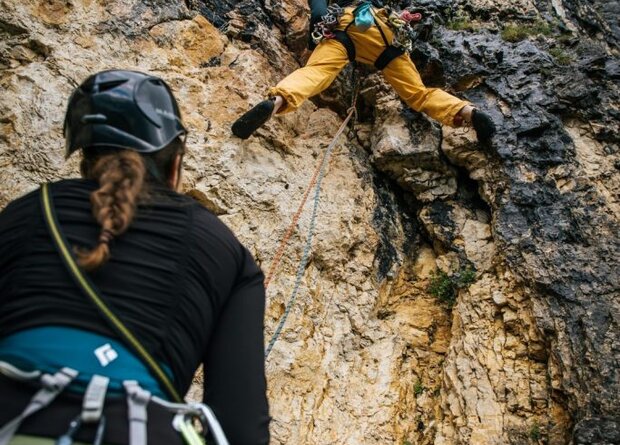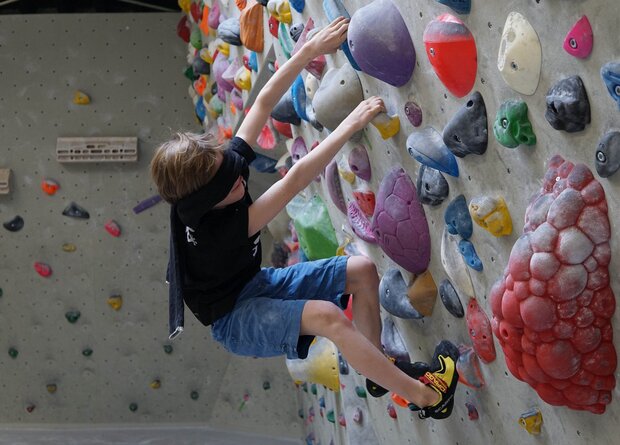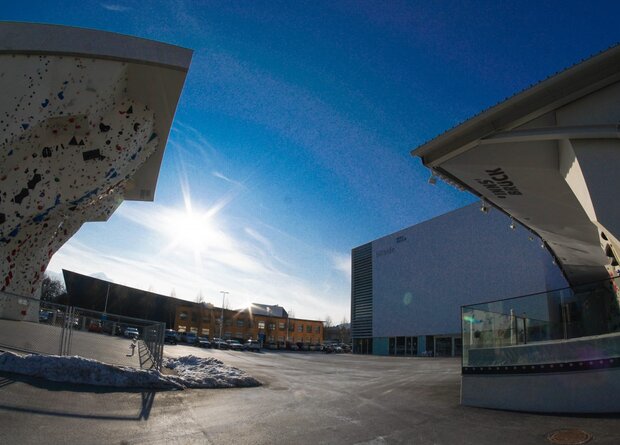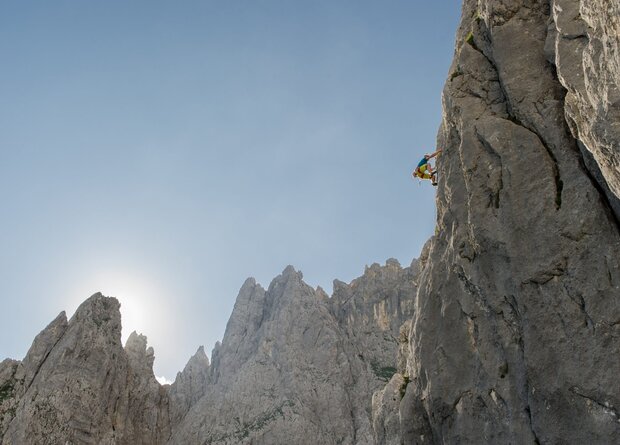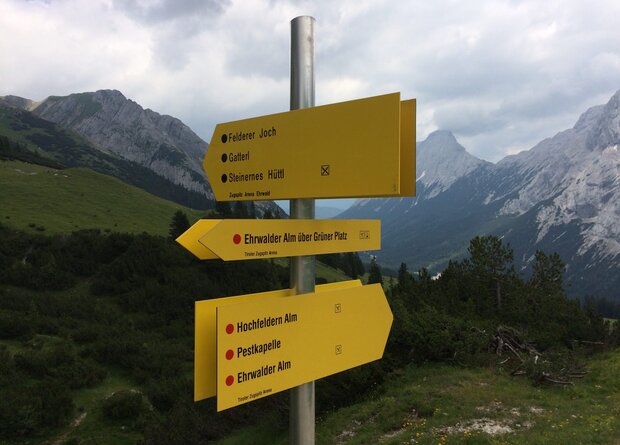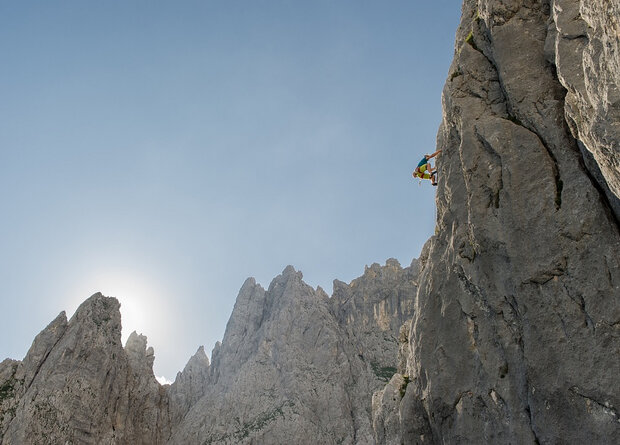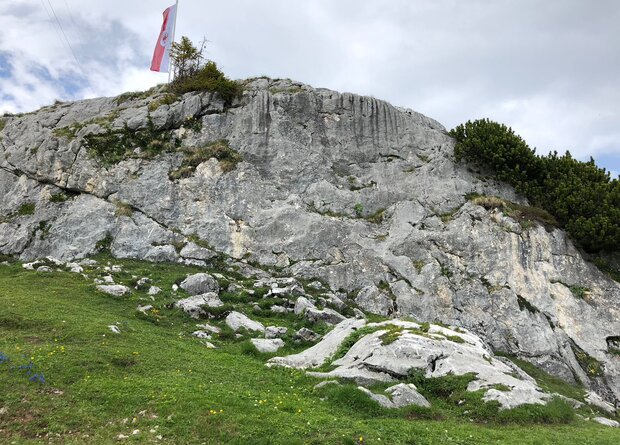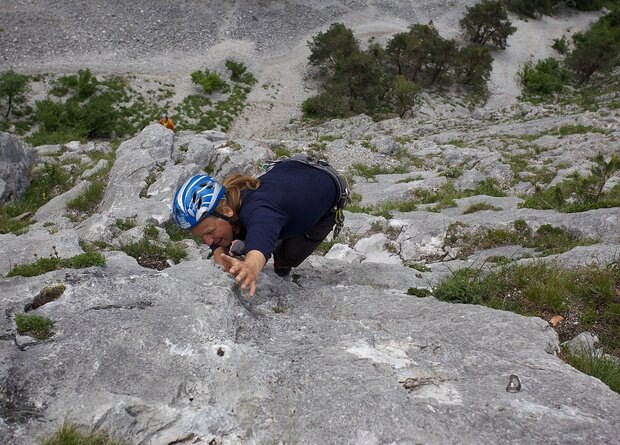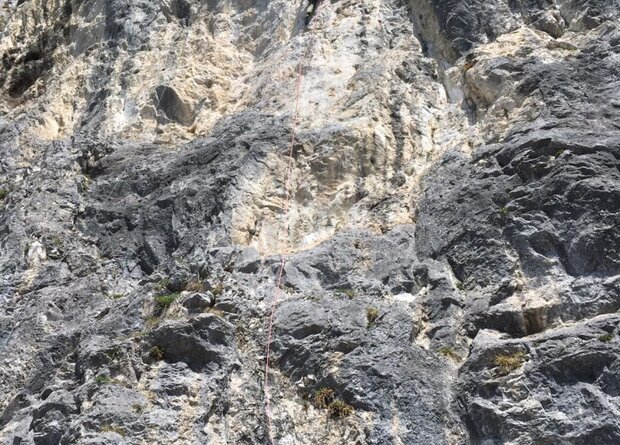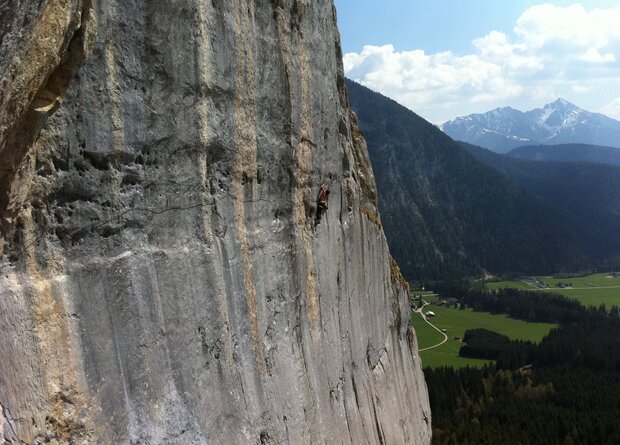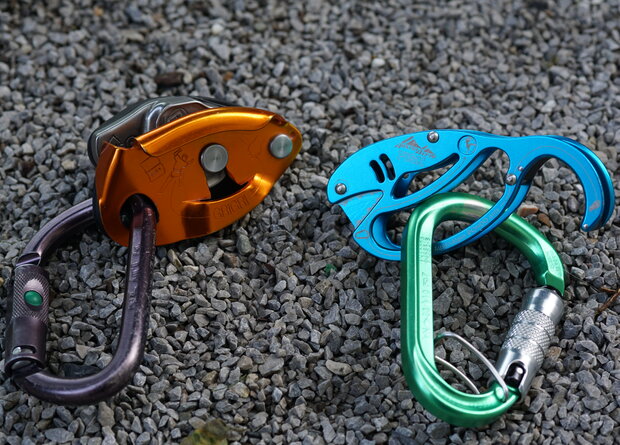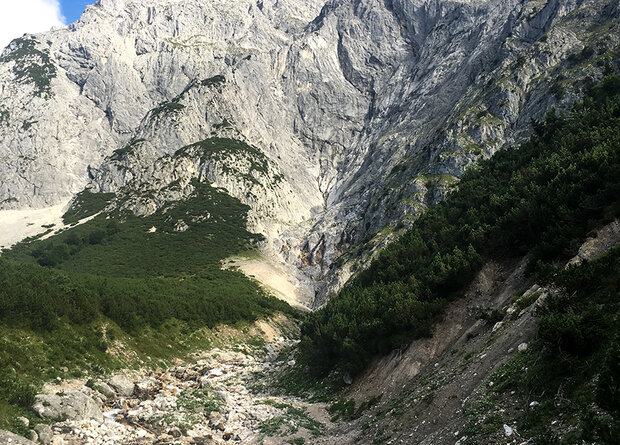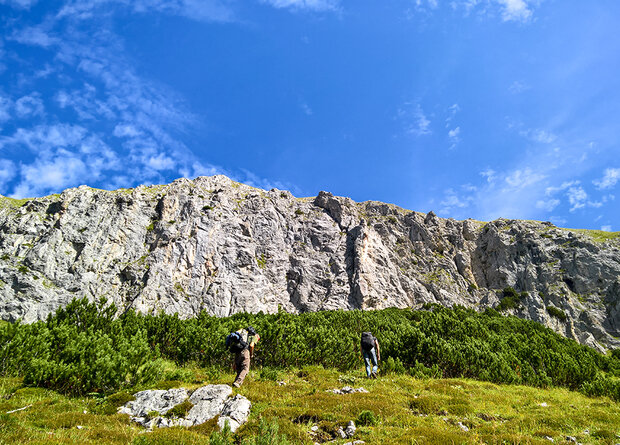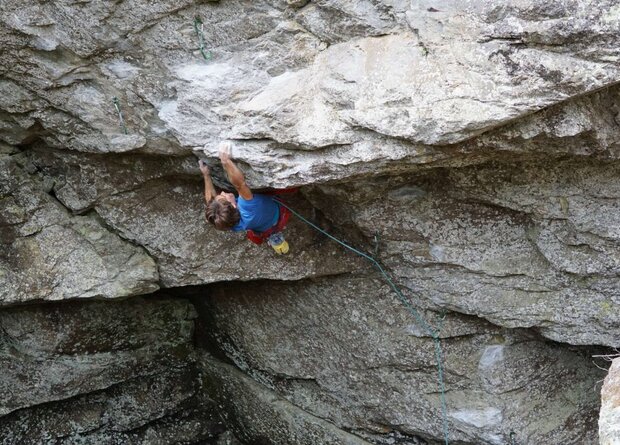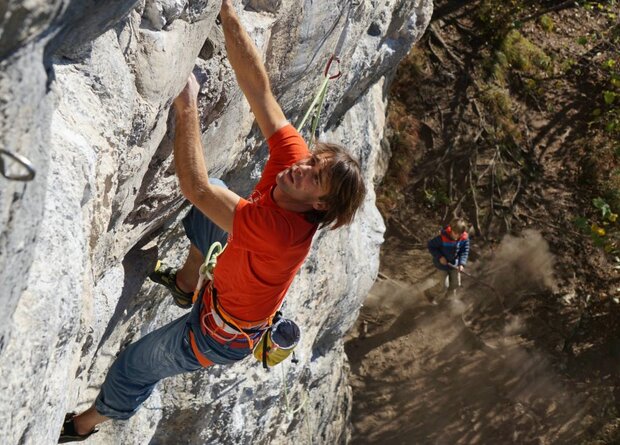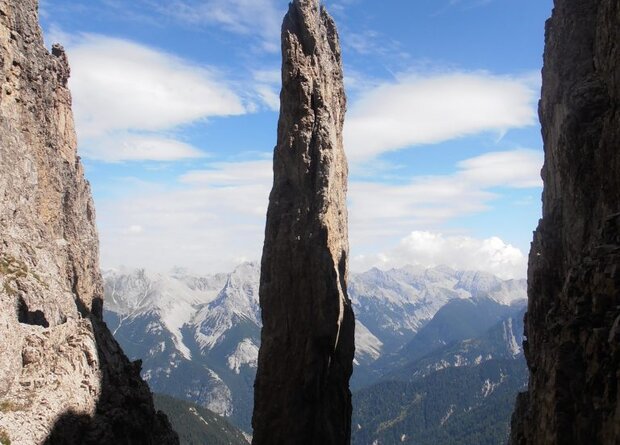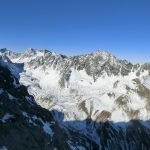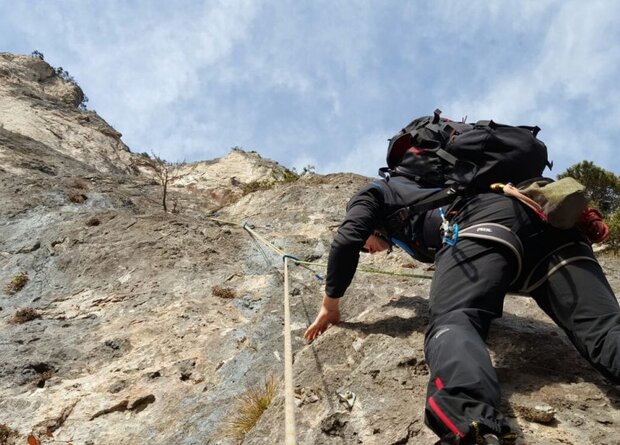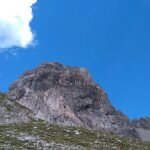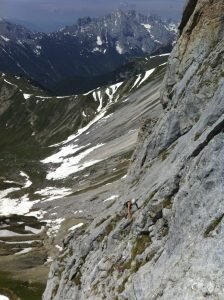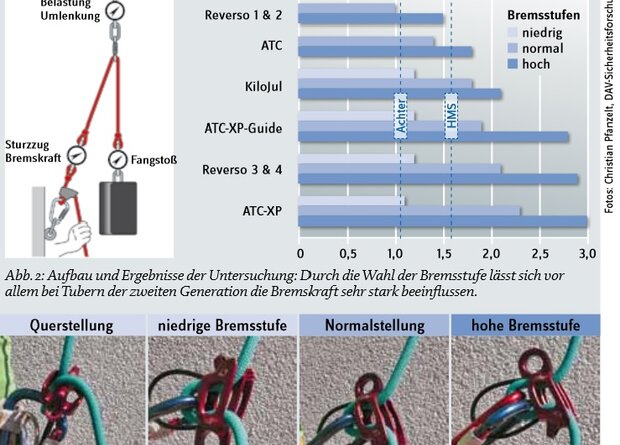Summer is finally here! The air is shimmering in the valley, the days are long and practically overlong, reminding us that now is the best time for long multi-pitch tours. We start the season with a classic: Waidringer Steinplatte in the Steinberge mountain sports region. The rock massif, the only dry reef in Europe, sticks out of the landscape like a climbing lighthouse with its seven kilometers in length and a height of up to 250 meters. Anticipation on the approach, wet hands and a jumping heart. Steinplatte, here we come!
Waidringer Steinplatte: seven kilometers of pure climbing pleasure
Between Waidring and Lofer, visible from afar from the valley, is a seven-kilometre-long band of rock up to 250 meters high, whose exceptionally good rock quality can be seen from afar - the Steinplatte. Whether sport climber or alpinist, motivated beginner or experienced pro, there is something for everyone here with over 800 climbing routes. There are climbing gardens, multi-pitch tours for pleasure climbers (5th and 6th degree of difficulty), airy, alpine sport climbing routes up to the 9th degree and routes in all difficulty ranges that have to be secured by yourself.
The imposing Weidringer Steinplatte is visible from afar, photo: Bonnie Klingler
Flat at the bottom, grippy at the top
Once you have decided on one of the countless routes, it starts off rather flat at the bottom of the wall, then becomes steeper, more exposed and incredibly grippy towards the top - this is how the climbing on the central pillar of the Steinplatte can be summarized in a nutshell. In the uppermost pitches, you finally reach fantastically grippy rock, littered with an incredible variety of holes that is unparalleled in the wider area. The fact that the protection can be provided over long stretches with hourglasses shows how good the grip of the rock is. When climbing the last pitch, you can't help but think of abseiling down from the top into the neighboring exits in Verdon style to get your hands on this deluxe rock.
A climbing paradise for every level
If you cross over from the parking lot of the toll road to the access points, you will first come across some sport climbing sectors or rather short, but all the more crisp multi-pitch routes. This is the playground for climbers who feel at home in the 8th degree upwards. The more you traverse to the east, the greater the height of the wall. However, the rock leans back a little so that you finally reach picture-book 200-metre-high plaisir terrain at the central pillar. Classics with moderate difficulties in the 6th and 7th degree attract the majority of Steinplatte aspirants here. Together with the excellent reef limestone, they merge into a harmonious climbing symbiosis.
Plaisir terrain and wonderful views characterize the Steinplatte, photo: Bonnie Klingler
Hunting mice: iron mouse and iron louse
You can choose between a wide variety of belaying styles in a very confined space. Two of the upper classics in this wall area are emblematic of this: While the "Ironmouse" is a little more sporty in the 7th degree, bolts at appropriate intervals ensure that the stress level does not rise too high. In contrast, the Ironlaus (6th degree), which runs directly to the left, requires much more personal commitment when it comes to protection, so the overall demand is certainly similarly high: only the most critical points are secured with bolts here, and there are no more than one to three of them per pitch. A complete set of wedges and friends is therefore essential on the harness. And only those who feel absolutely up to the 6th degree of difficulty in alpine terrain should climb the route.
Self-commitment when belaying is sometimes required, photo: Bonnie Klingler
Between route diversity and "network disruption"
Both routes also exemplify the only drawback on the Steinplatte: both are not independent routes, but combinations of different overall ascents or even just individual pitches. Particularly on the central pillar, the wall is now covered by such a dense, intersecting network of routes that even experienced alpine climbers should always take a look at the topo to avoid accidentally turning off onto the wrong route or chasing a new bolt line. The author of the "Steinplatte" area guidebook, Adi Stocker, therefore recommends sticking to the routes that have been developed.
On the other hand, this variety of routes offers the great advantage of being able to take a more difficult shortcut or an easier detour on the way, depending on your strength reserves and schedule. And especially in the upper part of the wall - when the exposure increases, the rock splits up, but the difficulty does not increase due to the incredible variety of holds - the art of slab climbing is to pack as many of the memorable pitches as possible into one big variation.
In the Ironlaus, photo: Bonnie Klingler
After climbing is before bathing
After a long multi-pitch tour, what could be better than refreshing your heated body in the cool water? Exactly: none! So take your swimming gear with you and head to St. Ulrich at Pillersee. Get into the water and float. Watch the cows graze, hire a stand-up board and float along the lake. Enjoy the idyllic setting and reflect on the day's climbing - a summer dream. For those who prefer a smaller lake: the Wiesensee is also a little gem in the region. In addition to the small pond, you can also dip your calves into the cold water in Kneipp style, and if you're still in the mood for climbing, you can take one or two sport climbing routes at the climbing garden of the same name - which is conveniently located right next to the water. The days are long, the nights are short - time to enjoy the summer to the full.
After climbing, enjoy the beautiful view, photo: Bonnie Klingler
Tips and further information
Snack:
The Stallenalm is located in the Steinplatte ski area and is only a ten-minute walk from the Steinplatte parking lot. The hut is a hearty snack stop with Tyrolean ski hut flair and is also on the way back after a long day of climbing. If you get hungry after swimming, you can stop off at Pillersee or head back towards Waidring and stop off at the Adolariwirt. The Wiesenseehof at the Wiesensee is a good place for coffee, cake or something hearty.
Stay overnight:
There is plenty of accommodation in the PillerseeTal vacation region - from wellness hotels to vacation apartments. Particularly recommended is the traditional Adolariwirt guesthouse and climber's inn south of Waidring in the direction of St. Ulrich am Pillersee.
Tips:
If you are staying overnight in the valley, you can save yourself the long ascent by taking the Steinplatten gondola. From the mountain station, a short but steep, secured path leads down ladders and footholds towards the foot of the wall.
Here you can also walk through the "Triassic Park", an interactive outdoor leisure park for families. 200 million years ago, the primeval sea Tethys was located in the Steinplatte region. The creators have presented the prehistoric wonders in a vivid and child-friendly way. Climbers are immersed in a different world, but for the younger members of the family, there are certainly adventures for big eyes. www. triassicpark.at
